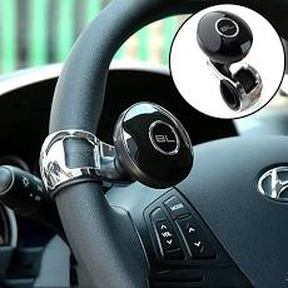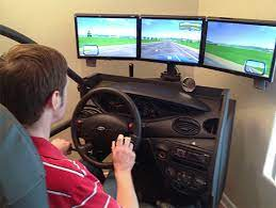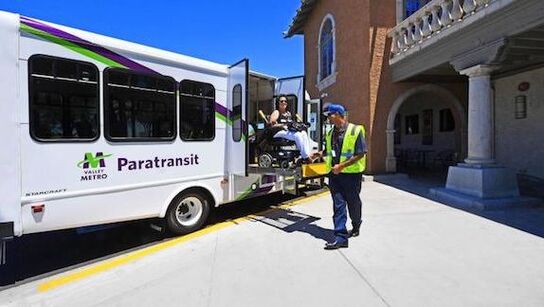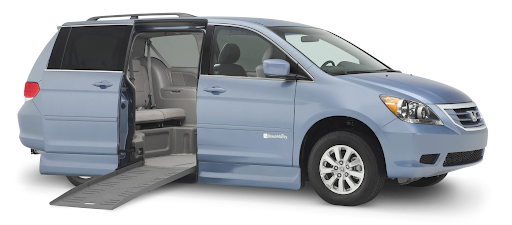Driving and ALS |
|
|
As ALS progresses, the question of how long you should continue to drive may arise. It can be hard to consider giving up the independence that driving provides, but if you continue to drive after it has become unsafe, you could hurt yourself and put others at risk.
There are ways to gauge whether you can still safely drive, and transportation alternatives if you need to delegate driving. |
Can I still drive after my diagnosis?
|
A diagnosis of ALS does not mean you must stop driving immediately. You may continue driving—but only as long as it is safe. ALS is a progressive disease, so being realistic about your current driving capabilities, listening to the concerns of others, and being open to reevaluating your situation as your symptoms progress are key to maintaining safety.
If your caregiver, family, or friends express concerns about your driving, listen to them. Studies show that loved ones have a more accurate assessment of driving safety than the drivers themselves. It is important to discuss driving safety early and often with your ALS clinic team. Your neurologist and occupational therapist (OT) can guide you, evaluate you, and make recommendations that will help keep you safe. If your clinic team feels it is still safe for you to drive, ask your neurologist for a handicap parking permit to help you park closer and conserve energy. |
|
Are there changes I can make to keep driving?
|
In some instances, the addition of vehicle modifications may allow you to continue driving safely. If your lower limbs are strong and just one hand is weak, you may be able to continue driving with a spinner knob that can be used to operate the wheel with one hand. Additionally, modifications to secondary controls such as turn signals and wipers may be added.
If your lower limbs are weak, but you still have good upper body strength, you may be able to control the gas and brakes with your hands using special hand controls. |
Talk with your OT about whether there are modifications that could help you continue driving safely. Do not try to make modifications on your own. Your OT will refer you to a specialist who can evaluate you, order the right devices, and train you to use the devices before installation.
Driving modifications could cost a few thousand dollars, and you will likely need to pay out of pocket. Modifications made to the vehicle, such as spinner knobs and hand controls, must be noted as a restriction on your license in order to be used legally in the vehicle.
If you have trouble getting in and out of your car by yourself, or if you can’t buckle your seat belt on your own, ask your OT about assistive devices that might help.
Driving modifications could cost a few thousand dollars, and you will likely need to pay out of pocket. Modifications made to the vehicle, such as spinner knobs and hand controls, must be noted as a restriction on your license in order to be used legally in the vehicle.
If you have trouble getting in and out of your car by yourself, or if you can’t buckle your seat belt on your own, ask your OT about assistive devices that might help.
When should I stop driving?
|
You should stop driving when it becomes unsafe to you and others. Your occupational therapist can assist you when this becomes the case. If it is very clear, your OT or physician will make the recommendation that you stop driving. Or, if further assessment is recommended, you can schedule a formal driving safety evaluation.
|
|
There are some general signs that driving may no longer be safe. You may need to stop driving, or seek an evaluation, if you:
Every situation is different. If you or your loved ones have safety concerns, or if your symptoms change, schedule an appointment with your OT to get clearance before continuing to drive.
If your medical team recommends and documents that you should stop driving, and you get into an accident (even if it is not your fault), you may get sued and be liable for damages.
- Don’t have the muscle strength to properly control the wheel and pedals
- Can’t get in and out of your car on your own or might fall after getting out
- Have breathing challenges that affect your driving and/or energy level
- Have secretions that interfere with your driving
- Exhibit poor judgment that leads to accidents or near misses
- Change your driving patterns, such as driving much more slowly
- Have a slower reaction time
- Wear a neck brace that prevents you from looking side to side
- Wear an ankle foot orthosis (AFO) that interferes with your driving (and that you can’t take on and off independently)
Every situation is different. If you or your loved ones have safety concerns, or if your symptoms change, schedule an appointment with your OT to get clearance before continuing to drive.
If your medical team recommends and documents that you should stop driving, and you get into an accident (even if it is not your fault), you may get sued and be liable for damages.
How can I get a driving evaluation?
|
The occupational therapist at your ALS clinic can do a screening during your routine clinic visit. If your OT feels that further evaluation is needed, they may do more in-depth testing either during your visit or during a separate follow-up visit. If you or your OT would like further assessment about your driving capabilities, you can schedule a formal driving evaluation.
|
Your OT may recommend a specific driving rehabilitation specialist or location that can perform the test. You can also search for evaluation options in your area on the Association for Driver Rehabilitation Specialists website.
Some places will conduct a simulated test in a clinical setting that measures things like your reaction time, cognition, divided-attention capabilities, and visual perception. Others may conduct an on-the-road driving test. Some may do both. A clinical test alone may cost a few hundred dollars. A combined test may cost $500, or even up to $1,000 in some states. In most cases, insurance will not cover your driving evaluation, so you will need to pay out of pocket.
Some places will conduct a simulated test in a clinical setting that measures things like your reaction time, cognition, divided-attention capabilities, and visual perception. Others may conduct an on-the-road driving test. Some may do both. A clinical test alone may cost a few hundred dollars. A combined test may cost $500, or even up to $1,000 in some states. In most cases, insurance will not cover your driving evaluation, so you will need to pay out of pocket.
How will I get around if I need to stop driving?
|
When you need to delegate driving, there are other options for getting where you need to go. Planning ahead and lining up transportation options should allow you to still get out and do the things that are important to you.
You can start by asking family, friends, and other members of your community if they can help give you rides. You can set up a digital calendar, use an online tool like Lotsa Helping Hands or CaringBridge, or develop another system so you can communicate your transportation needs and people can volunteer for specific days and times. |
Other options in your community may include public transportation, ride services like Uber and Lyft, or handicap-accessible transportation services. You can search for medical transportation options in your area on the Rides In Sight website.
If you have a heavy power wheelchair, you may still be able to use public transportation and handicap-accessible ride services. Some families decide to purchase handicap-accessible vans for greater freedom of movement. You may be able to transport your power wheelchair using vehicle lifts and ramps.
Learn more about your options on our Transportation with ALS page.
If you have a heavy power wheelchair, you may still be able to use public transportation and handicap-accessible ride services. Some families decide to purchase handicap-accessible vans for greater freedom of movement. You may be able to transport your power wheelchair using vehicle lifts and ramps.
Learn more about your options on our Transportation with ALS page.
A note for concerned caregivers and loved ones
Driving can be a source of stress and worry, especially if you have safety concerns and your loved one does not want to listen or stop driving. Ideally, your ALS clinic or medical team will begin talking about driving as early as the first clinic visit. The ultimate transition will be easier if driving safety has been an ongoing conversation.
If your loved one refuses to stop driving after hearing your safety concerns, you can contact the ALS clinic or medical team independently to share your concerns before the next visit. It is helpful to have a neutral professional (such as a neurologist, occupational therapist, or social worker) facilitate the conversation and make recommendations.
If your loved one refuses to stop driving after hearing your safety concerns, you can contact the ALS clinic or medical team independently to share your concerns before the next visit. It is helpful to have a neutral professional (such as a neurologist, occupational therapist, or social worker) facilitate the conversation and make recommendations.
Your ALS Guide developed this page in collaboration with Melissa Werz, an occupational therapist at the Duke ALS Clinic. Melissa is a Certified Driver Rehabilitation Specialist who has conducted thousands of driving safety evaluations.








